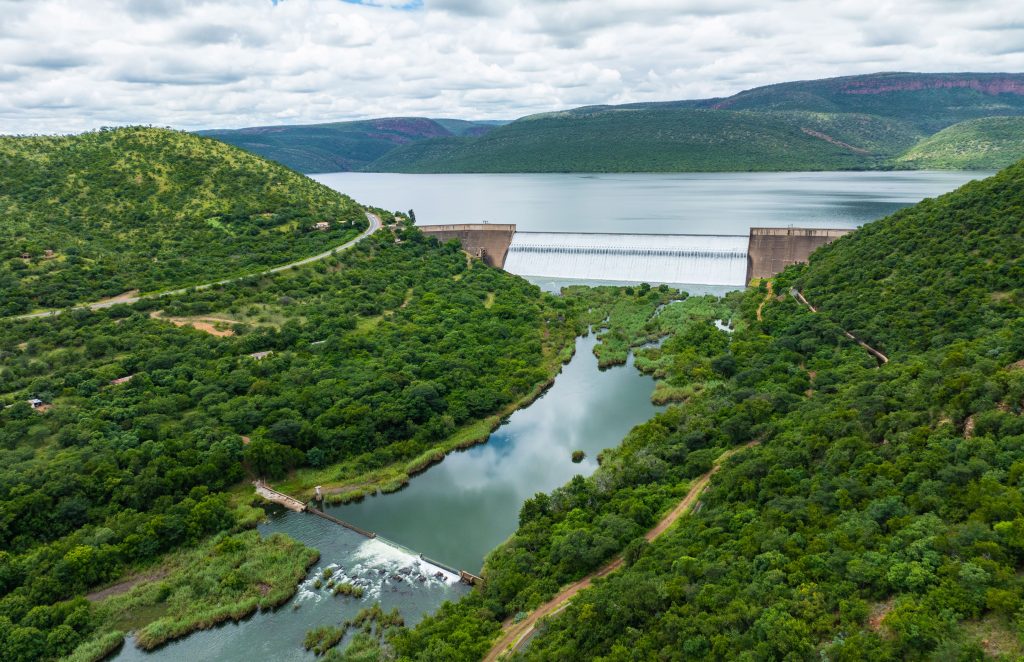
On Friday, Thungela celebrated an innovative fish breeding facility at the Loskop Dam Nature Reserve in Mpumalanga, commissioned to restore aquatic life in the Wilge-Olifants river catchment following the unfortunate uncontrolled release of mine-impacted water from Khwezela Colliery’s Kromdraai site on 14 February 2022.

Thungela committed to rehabilitating the areas affected by this overflow and took full accountability to do what was necessary to restore the ecosystem. Through partnerships with the relevant stakeholders, Thungela developed a rehabilitation plan approved by the Department of Water and Sanitation, which included various activities aimed at restoring the environment, with particular emphasis on enhancing biodiversity to levels beyond those prior to the incident.
Through close collaboration with the Mpumalanga Tourism and Parks Agency (MTPA) and leading aquatic scientists in South Africa, Thungela embarked on a path to execute the plan successfully. Amongst the activities contained in the plan was to speed up the recovery of the fish population to restore biodiversity in the Wilge-Olifants River catchment, which resulted in the commissioning of the fish breeding facility they unveiled on Friday.
July Ndlovu, CEO of Thungela, said, “I am proud to witness the fulfilment of the commitment that we, as a responsible coal miner, made in 2022. To be able to implement all aspects of the rehabilitation plan, which has led to the restoration of the environment to even better conditions than we found it – is the legacy we want to leave. We hold ourselves to the highest standards as set out in our Environmental, Social and Governance (ESG) Framework.”

“Our dedication to this initiative has helped us achieve our objective of minimising impact on the environment to achieve sustainable outcomes where we operate, and we are thrilled that the partnerships we have formed with the MTPA will extend well beyond the river system’s ultimate revival. We anticipate that this facility will become a hub for research in endemic species into the future and that the MTPA will run the facility to benefit other river systems,” said Ndlovu.
With water quality having returned to pre-incident levels and a resurgence in macro invertebrate activity observed, the time is right to replenish fish stocks. Through the fish breeding project, up to sixteen native fish species will be re-introduced to the river system. These will be released as part of the launch celebration, and we will continue to breed and release fish until monitoring indicates that fish diversity and population density have returned to pre-incident levels.
In addition, Thungela has forged partnerships with other authorities, the farming community and members of society, embodying a shared vision for environmental stewardship and the well-being of neighbouring communities. This initiative not only contributes to the improvement of biodiversity in the area but also highlights Thungela’s dedication to environmental restoration and sustainability – demonstrating the Company’s accountability and commitment to being a responsible steward of the environment.
Mduduzi Vilakazi, CEO of Mpumalanga Tourism and Parks Agency, commends the collaboration: “Our partnership with Thungela showcases the significance of united efforts in conserving our region’s valuable natural resources and enhancing community livelihoods. This partnership sets a precedence that ensures sustainable use of resources to benefit our communities. The best way to conserve nature is through such strategic collaborations with established economic entities that invest in environmental appreciation.”

The fish breeding facility is among several of Thungela’s conservation endeavours, including the introduction of renewable energy solutions and advanced water treatment systems to protect the environment, particularly during periods of low rainfall in the area.
We are committed to continuously share updates on the rehabilitation measures to rectify the environmental impact and averting future occurrence, with an end goal of achieving full ecological revival that reflects a return to pre-incident biodiversity and water quality levels.